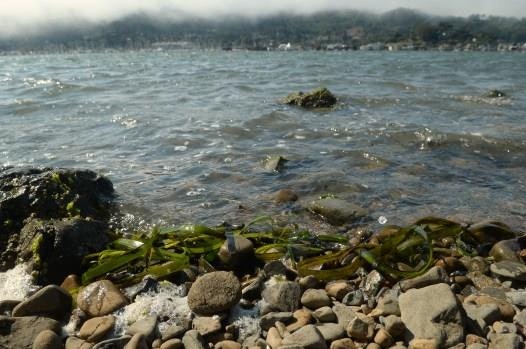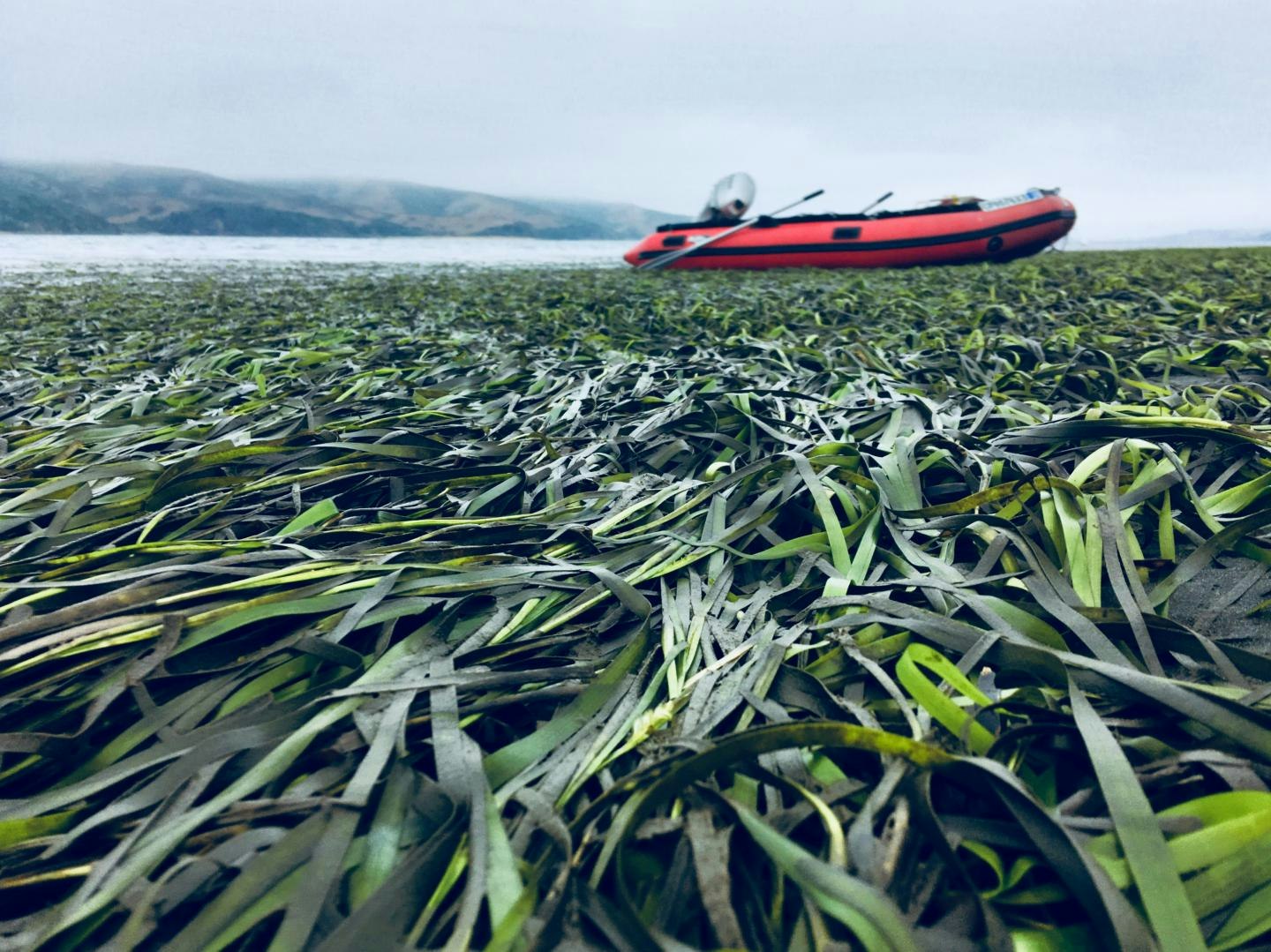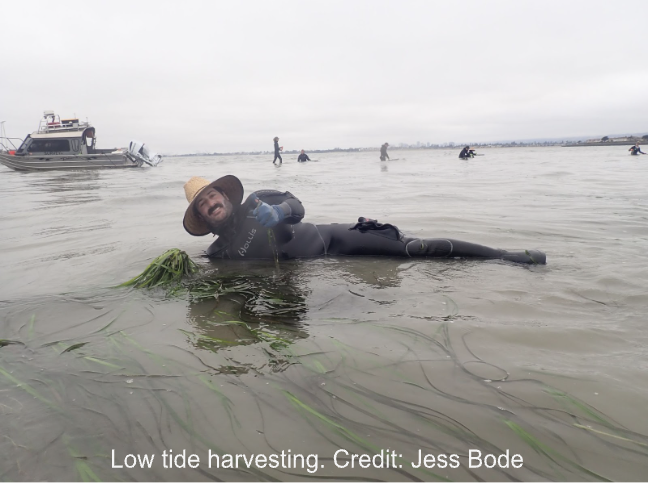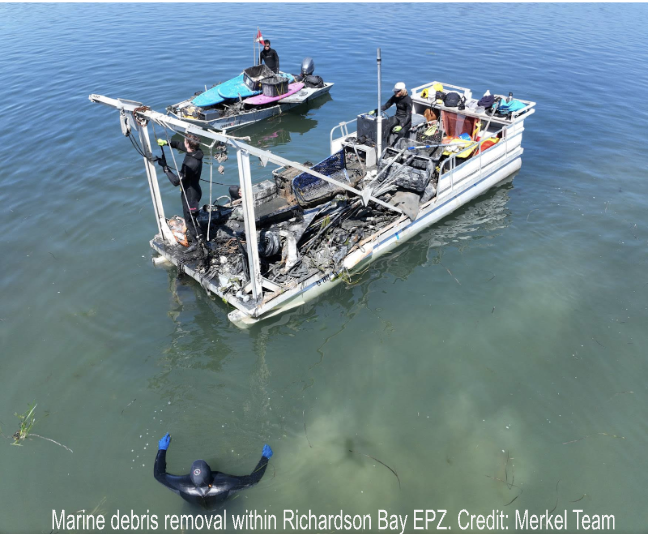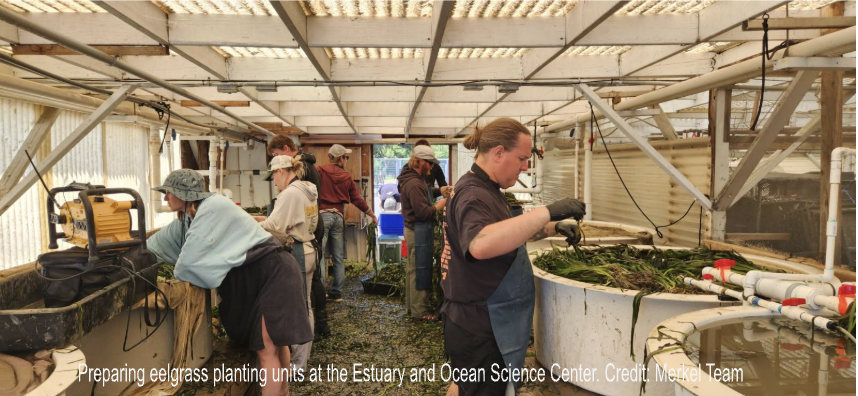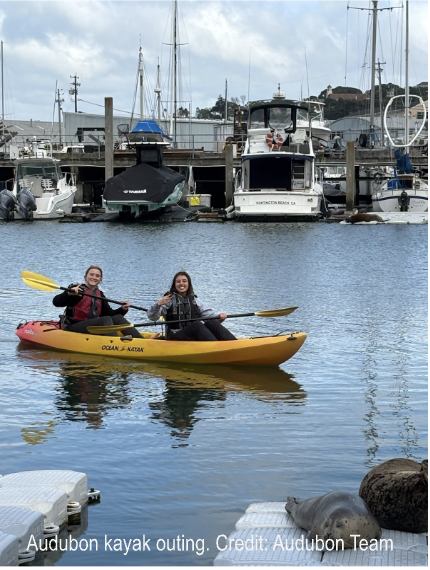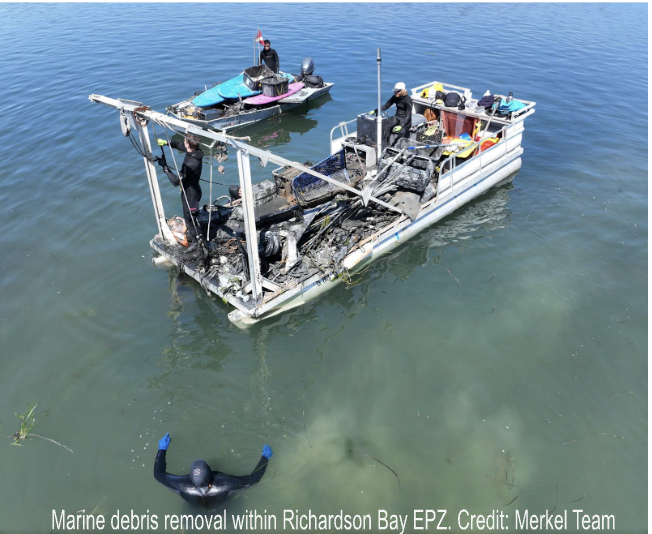Eelgrass in Richardson Bay
Background
RBRA included RAMP development as the first deliverable in its EPA-funded Eelgrass Restoration Project, currently underway in collaboration with Coastal Policy Solutions, Merkel & Associates, Audubon California, and Dr. Kathy Boyer’s lab at San Francisco State University’s Estuary and Ocean Science Center. The RAMP was developed by Merkel & Associates during the fall of 2023 and is a technical document outlining a 10-year plan to restore, monitor, and manage eelgrass in Richardson Bay. It includes significant background, detail, and timelines for eelgrass restoration in Richardson Bay.
Eelgrass (Zostera marina) is a type of marine, flowering seagrass that exists in temperate zones around the world. It thrives in soft seafloor environments, typically in shallow bays and estuaries. Eelgrass blades are thin and narrow, growing up from the sea floor toward the sun. Similar to kelp, it provides a habitat for many organisms that use it for food and shelter.
San Francisco Bay holds ⅓ of all California eelgrass and has experienced a major loss in the 20th century due to climate change, coastal development, sediment supply and anchor scours. Richardson Bay is the 2nd largest bed in the San Fransisco Bay area.
Unfortunately, most of us are unaware of the importance this plant plays in the marine environment. As a result, federal government designated eelgrass as Essential Fish Habitat (EFH) and a Habitat of Particular Concern under the Magnuson-Stevens Fishery Conservation and Management Act in 1996.
Why is eelgrass important?
- Basis of food our chain and ecosystems
- Habitat for - seals, porpoises, river otters, crabs, baby fish, migrating birds and even a spawning habitat for herring
- Food source – consumed directly by fish, shellfish, waterfowl and migratory birds
- Nursery for eggs & larvae and a refuge from predators
- Nutrient filter – removes nitrogen that can fuel algae growth
- Sediment trap – dense leaf growth and extensive rhizome and root mats remove particles from the water and stabilizes sediment
- Wave protection – helps reduce the effects of coastal erosion and stablizes shorelines
- Climate resiliency – is a carbon sink that makes up 10% of the ocean’s ability to store carbon
- Improves water quality and reduces ocean acidification
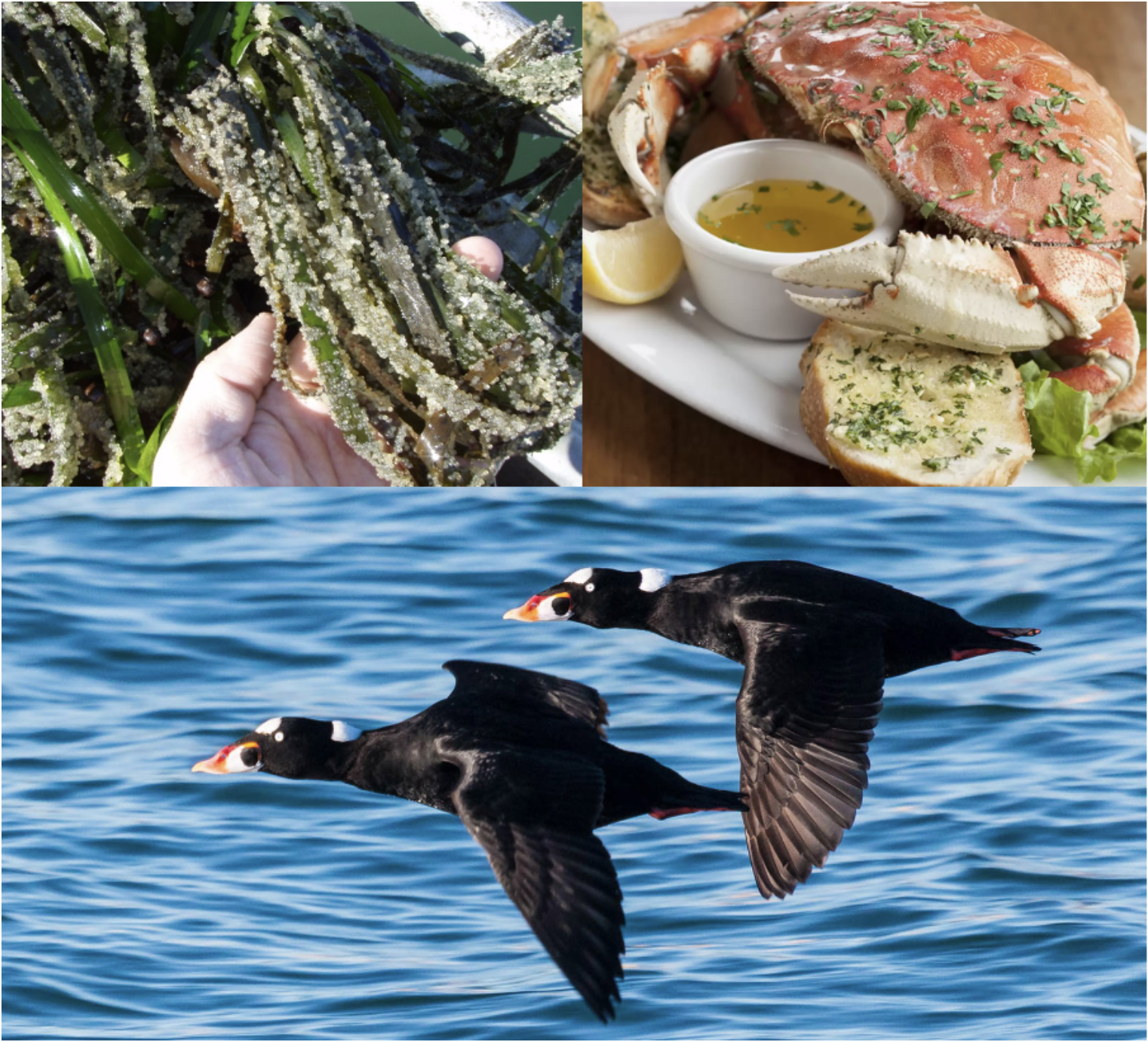
In May 2025, RBRA and partners achieved a major milestone by removing approximately 4,200 pounds of debris from Richardson Bay's floor. Focusing efforts in areas of Richardson Bay targeted for this year’s restoration efforts, divers Merkel & Associates recovered over two tons of debris associated with the former liveaboard vessels, including two small boats, marine batteries, outboard engines, household items (PlayStation, microwave, office chair), anchor chains, and dozens of bottles. As Keith Merkel noted, "This is just the tip of the iceberg," with the 300-acre former anchoring area containing many more tons of debris that interfere with eelgrass restoration efforts. Additional marine debris efforts will be undertaken in spring 2026 in advance of next year’s restoration efforts.
See our document page for more resources.


